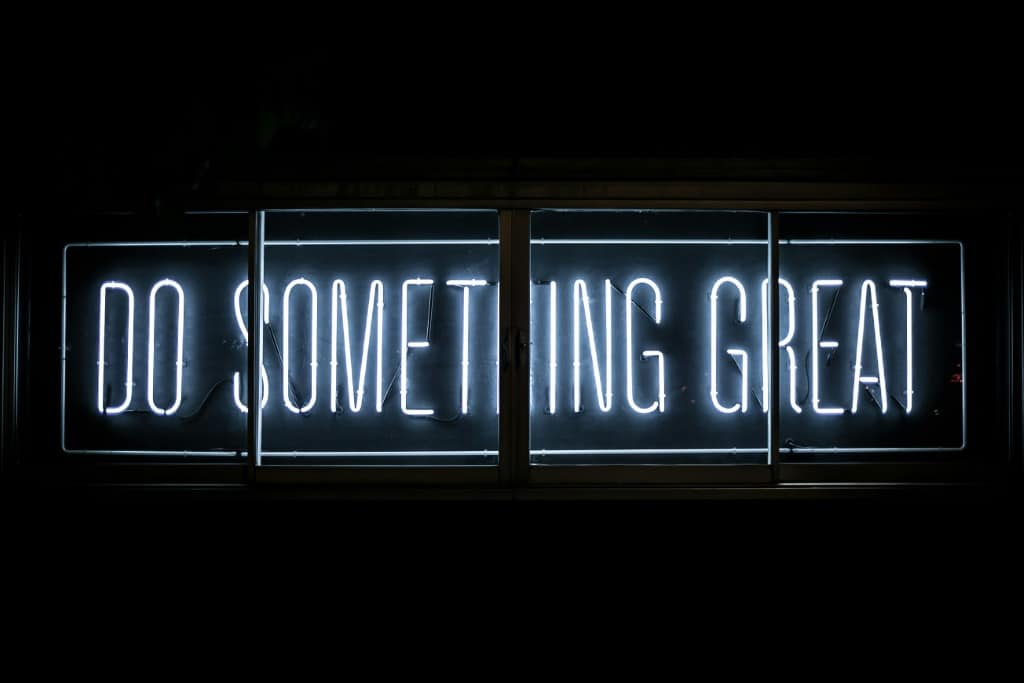The Ultimate AI Career Development Guide

Photo by Clark Tibbs on Unsplash
7 Powerful AI Prompts to Take Your Career to the Next Level
Introduction
Hey, Chad here,
Navigating your career path can feel like juggling multiple priorities: skill development, job searching, networking, and aiming for that promotion—often while feeling stretched for time and resources. That’s why we created **The Ultimate AI Career Guide**, a game-changing resource designed to help professionals like you work smarter, not harder, in achieving your career aspirations.
Our comprehensive, expert-crafted AI prompts cover every essential aspect of career advancement, from crafting compelling resumes and cover letters to mastering interview skills and developing strategic career plans. Whether you need to refine your job search strategy, prepare for a crucial interview, build your professional brand, or map out your career progression, this guide equips you with powerful, ready-to-use AI-driven solutions.
With carefully structured prompts across key career development categories, each tailored to real-world professional needs, you’ll find practical, actionable insights that help you:
✅ Boost your career trajectory by strategically planning your development and identifying key opportunities.
✅ Enhance your job search effectiveness with AI-driven tools for resume optimization, networking, and interview preparation.
✅ Improve your professional branding and visibility with AI-generated strategies for online presence and influence.
✅ Strengthen your career management skills through frameworks for performance improvement, promotion readiness, and long-term career growth.
✅ Navigate career transitions confidently with proven approaches for skill gap analysis, career pivoting, and industry changes.
Unlike generic career advice, **The Ultimate AI Career Guide** is structured for clarity, ease of use, and maximum impact. Each prompt is carefully designed to guide you through advanced career strategies, making them accessible, actionable, and effective—no technical expertise required.
Each prompt in this guide is carefully structured to help you work smarter, not harder by streamlining your job search, enhancing your interview skills, and maximizing your career development efforts. Whether you’re aiming for a promotion, changing careers, or just starting your professional journey, these AI-powered prompts will help you get results faster.
How to Use This Guide:
* Each section is categorized by career function (Job Search, Skill Development, Promotion, etc.).
* Every prompt includes step-by-step instructions to help you get the best AI-generated responses.
* Simply input your specific career details into the Context section for highly personalized outputs.
Ready to transform your career journey? Explore **The Ultimate AI Career Guide** today and start unlocking faster, smarter, AI-powered career success.
Too-long. Didn't read the instructions.
1. Copy the prompt into word or notepad.
2. Fill out the “Context” section with details that matter to you.
3. Paste the revised prompt into ChadGPT or your favorite AI Chat Assistant.
01 - Skill Gap Analysis and Development Plan
Goal: I want to identify the key skills I need to advance my career in my desired field and create a structured plan to develop those skills effectively. This plan should be actionable and time-bound, helping me bridge the gap between my current skills and my career aspirations.
Return Format: Provide a 5-step skill gap analysis and development plan framework, including:
- Define Target Role & Required Skills:Clearly outline the specific role I’m aiming for and the essential skills, both technical and soft, required for success in that role.
- Assess Current Skills & Competencies:Evaluate my existing skills and experience, identifying strengths and areas where I need improvement relative to the target role.
- Identify Skill Gaps:Pinpoint the specific skills and competencies where there is a significant gap between my current abilities and the requirements of my target role.
- Develop a Learning & Development Plan:Create a detailed plan outlining specific actions, resources, and timelines for acquiring the necessary skills (e.g., courses, projects, mentorship, self-study).
- Establish Progress Tracking & Review:Define metrics to track my skill development progress and set regular review points to adjust my plan as needed.
Additionally, provide:
- A skill gap analysis template to guide the assessment process.
- Examples of relevant online courses, certifications, and resources for skill development in common white-collar professions.
- Tips for staying motivated and consistent with a long-term skill development plan.
Warnings:
- Be realistic about the time and effort required for skill development – avoid setting unrealistic expectations.
- Focus on developing skills that are genuinely in demand and valuable in your target field, not just trending topics.
- Ensure your development plan is aligned with your career goals and personal interests for sustained motivation.
Style Guidelines (For Customer-Facing Content):
- Strategic and forward-thinking—focus on proactive career growth.
- Practical and actionable—provide concrete steps and resources.
- Empowering and motivating—encourage users to take control of their career path.
- Clear and structured—easy to follow and implement the framework.
Context: For context: I am a [Your Current Job Title] in the [Your Industry] industry with [Number] years of experience. I am aiming for a role as a [Your Target Job Title] within [Timeframe, e.g., the next 2 years] in the field of [Your Target Field/Industry]. My current skill set is strong in [List 2-3 key skills], but I need to develop [List 2-3 skills you want to improve] to be competitive for my target role.
02 - Networking Strategy for Career Advancement
Goal: I want to develop a strategic networking plan to expand my professional connections and unlock career opportunities. This plan should be targeted, efficient, and focused on building meaningful relationships that support my career goals.
Return Format: Provide a 5-step networking strategy framework, including:
- Define Networking Goals:Clearly identify what I hope to achieve through networking (e.g., job leads, industry insights, mentorship, collaborations).
- Identify Target Network:Determine the types of professionals and industries that are most relevant to my career goals and should be part of my network.
- Choose Networking Channels & Platforms:Select appropriate online and offline channels for networking (e.g., LinkedIn, industry events, professional organizations, alumni networks).
- Develop a Networking Approach & Conversation Starters:Craft a strategy for initiating and nurturing connections, including effective conversation starters and value propositions.
- Implement a Follow-up & Relationship Management System:Establish a system for following up with new contacts and maintaining ongoing engagement to build lasting relationships.
Additionally, provide:
- Examples of effective networking email templates and LinkedIn connection requests.
- A checklist for evaluating networking events and opportunities.
- Tips for making a strong first impression and building rapport in networking situations.
Warnings:
- Networking is about building genuine relationships, not just transactional connections – avoid being overly transactional or self-serving.
- Focus on quality over quantity – prioritize building meaningful connections with relevant individuals.
- Be respectful of others’ time and boundaries when networking – avoid being overly persistent or demanding.
Style Guidelines (For Customer-Facing Content):
- Strategic and purposeful—emphasize the importance of targeted networking.
- Practical and actionable—offer concrete steps and examples for effective networking.
- Relationship-focused and genuine—highlight the value of building authentic connections.
- Confident and encouraging—empower users to network effectively and comfortably.
Context: For context: I am currently [Your Current Job Title] in [Your Industry] and looking to [Your Career Goal, e.g., advance to a leadership role, change industries, find new opportunities]. My current network is [Describe your current network – e.g., limited to colleagues, strong within my current company, lacking in my target industry]. I am comfortable with [Your Networking Comfort Level, e.g., online networking, small group events, one-on-one conversations] but want to improve my ability to [Networking Skill you want to improve, e.g., initiate conversations, follow up effectively, network at large events].
03 - Resume and Cover Letter Optimization for Target Roles
Goal: I want to optimize my resume and cover letter to effectively target specific job roles and industries. These documents should be compelling, keyword-rich, and tailored to highlight my most relevant skills and experiences to capture the attention of recruiters and hiring managers.
Return Format: Provide a 5-step resume and cover letter optimization framework, including:
- Analyze Target Job Descriptions:Thoroughly review job descriptions for my desired roles to identify key skills, keywords, and requirements.
- Identify Relevant Skills and Experiences:Pinpoint my skills and experiences that directly align with the requirements and keywords identified in target job descriptions.
- Optimize Resume Sections for Impact:Refine each section of my resume (Summary/Objective, Experience, Skills, Education) to showcase relevant achievements and quantify results whenever possible.
- Craft a Tailored Cover Letter:Develop a compelling cover letter that directly addresses the specific requirements of the target role and company, highlighting my unique value proposition.
- Review and Refine for Clarity and Impact:Proofread meticulously for errors and ensure both documents are clear, concise, and impactful, using action verbs and professional language.
Additionally, provide:
- Examples of optimized resume and cover letter templates for common white-collar roles.
- A checklist for ensuring resume and cover letter alignment with job descriptions.
- Tips for using applicant tracking system (ATS) keywords effectively.
Warnings:
- Avoid generic resumes and cover letters – tailor each application to the specific job and company.
- Be truthful and accurate in your resume and cover letter – avoid exaggeration or misrepresentation.
- Focus on quantifiable achievements and results rather than just listing responsibilities.
Style Guidelines (For Customer-Facing Content):
- Strategic and targeted—emphasize the importance of tailoring application materials.
- Practical and actionable—provide step-by-step guidance and templates.
- Results-oriented and impactful—focus on showcasing achievements and value.
- Professional and polished—stress the importance of clear and error-free documents.
Context: For context: I am applying for [Target Job Title] roles in the [Target Industry] industry. My background is in [Your Industry/Field] and my key skills are [List 2-3 key skills]. I need help in [Specific area of resume/cover letter help, e.g., writing a strong summary, quantifying achievements, tailoring to different industries]. My current resume is [Describe your current resume – e.g., generic, outdated, lacks keywords].
04 - Ace the Interview: Preparation and Performance Strategies
Goal: I want to prepare effectively for job interviews to confidently showcase my skills, experience, and personality. I need strategies to handle common interview questions, articulate my value proposition, and make a lasting positive impression on interviewers.
Return Format: Provide a 5-step interview preparation and performance framework, including:
- Research the Company and Role:Thoroughly research the company, industry, and specific role to understand their needs and expectations.
- Prepare for Common Interview Questions:Practice answering common behavioral, technical, and situational interview questions, focusing on the STAR method (Situation, Task, Action, Result).
- Develop Your Value Proposition & “Tell Me About Yourself” Story:Craft a concise and compelling “elevator pitch” and a narrative that highlights your key strengths and career aspirations.
- Prepare Questions to Ask the Interviewer:Develop thoughtful questions to ask the interviewer to demonstrate engagement and gain valuable insights about the role and company culture.
- Practice Interview Skills & Mock Interviews:Practice your interview delivery, body language, and communication skills through mock interviews to build confidence and refine your approach.
Additionally, provide:
- A list of common interview questions and effective strategies for answering them.
- Tips for virtual interview etiquette and technical setup.
- Advice on how to handle salary discussions and negotiate offers.
Warnings:
- Be authentic and genuine – interviewers can detect inauthenticity.
- Listen carefully to the interviewer’s questions and answer directly and concisely.
- Follow up promptly after the interview with a thank-you note or email.
Style Guidelines (For Customer-Facing Content):
- Strategic and comprehensive—cover all key aspects of interview preparation.
- Practical and actionable—provide concrete tips and practice exercises.
- Confidence-boosting and empowering—encourage users to approach interviews with assurance.
- Professional and polished—emphasize the importance of professionalism and etiquette.
Context: For context: I have an upcoming interview for a [Job Title] role at [Company Name] in the [Industry] industry. I am comfortable with [Your Interview Strength, e.g., technical questions, behavioral questions, phone interviews] but struggle with [Your Interview Weakness, e.g., “Tell me about yourself”, salary negotiation, panel interviews]. I want to improve my [Specific Interview Skill, e.g., confidence, clarity of communication, asking good questions].
05 - Performance Improvement Plan for Promotion Readiness
Goal: I want to create a structured performance improvement plan to demonstrate my readiness for a promotion to [Desired Position]. This plan should focus on key performance areas, align with my manager’s expectations, and showcase my growth and potential for increased responsibility.
Return Format: Provide a 5-step performance improvement plan framework for promotion, including:
- Define Promotion Criteria & Expectations:Clearly understand the specific criteria and expectations for promotion to my desired role within my organization.
- Assess Current Performance & Identify Areas for Improvement:Evaluate my current performance against promotion criteria, identifying strengths and areas where improvement is needed.
- Set SMART Goals for Performance Improvement:Establish Specific, Measurable, Achievable, Relevant, and Time-bound goals focused on addressing identified performance gaps and demonstrating promotion readiness.
- Develop Actionable Steps & Seek Feedback:Outline concrete actions to achieve my performance goals, and proactively seek regular feedback from my manager and mentors.
- Track Progress & Document Achievements:Monitor my progress against goals, document key accomplishments and contributions, and regularly communicate my progress to my manager.
Additionally, provide:
- A template for documenting performance goals and progress.
- Examples of SMART goals for common white-collar roles seeking promotion.
- Tips for effectively communicating progress and achievements to managers.
Warnings:
- Ensure your performance improvement plan aligns with your manager’s expectations and organizational priorities.
- Focus on demonstrating consistent improvement and sustained high performance, not just short-term gains.
- Be proactive in seeking feedback and incorporating it into your plan.
Style Guidelines (For Customer-Facing Content):
- Strategic and goal-oriented—focus on achieving promotion through planned improvement.
- Practical and actionable—provide a clear framework and concrete steps.
- Proactive and results-driven—encourage users to take ownership of their performance.
- Professional and collaborative—emphasize the importance of manager alignment and feedback.
Context: For context: I am currently a [Your Current Job Title] at [Company Name] and aiming for a promotion to [Desired Job Title]. I have been in my current role for [Number] years and believe I am ready for more responsibility. My manager has indicated [Manager feedback regarding promotion readiness, e.g., I need to improve in X area, focus on Y skill, demonstrate leadership]. My strengths are [List 2-3 strengths relevant to promotion] and I want to focus on improving [List 1-2 areas for improvement] to demonstrate promotion readiness.
06 - Visibility and Influence Strategy for Career Advancement
Goal: I want to increase my visibility and influence within my organization to enhance my career prospects and be recognized for my contributions. This strategy should focus on building my professional brand internally and strategically engaging with key stakeholders.
Return Format: Provide a 5-step visibility and influence strategy framework, including:
- Identify Key Stakeholders & Decision-Makers:Determine who are the key individuals and teams that influence career advancement and recognition in my organization.
- Build Relationships with Stakeholders:Develop a plan to proactively build positive relationships with key stakeholders through communication, collaboration, and demonstrating value.
- Showcase Expertise & Contributions:Seek opportunities to showcase my expertise and contributions through presentations, projects, internal communication channels, and knowledge sharing.
- Seek Mentorship & Sponsorship:Identify potential mentors and sponsors within the organization who can provide guidance and advocate for my career advancement.
- Communicate Proactively & Strategically:Communicate my achievements, insights, and career aspirations proactively and strategically to the right audiences within the organization.
Additionally, provide:
- Examples of internal communication strategies for increasing visibility.
- Tips for effective presentations and internal knowledge sharing.
- Advice on seeking and building relationships with mentors and sponsors.
Warnings:
- Visibility should be earned through genuine contributions and value, not just self-promotion.
- Be mindful of organizational culture and communication norms when increasing visibility.
- Focus on building genuine influence through expertise and collaboration, not manipulation or office politics.
Style Guidelines (For Customer-Facing Content):
- Strategic and proactive—emphasize the importance of intentional visibility.
- Relationship-focused and collaborative—highlight building connections within the organization.
- Authentic and value-driven—focus on showcasing genuine contributions.
- Professional and ethical—stress the importance of maintaining professionalism and integrity.
Context: For context: I work as a [Your Current Job Title] at [Company Name] and feel my contributions are not always fully recognized. I am aiming for [Your Career Goal, e.g., promotion, leadership opportunities, recognition for expertise]. My company culture is [Describe company culture regarding visibility, e.g., encourages internal networking, values self-promotion, is more low-key]. I am comfortable with [Your Visibility Comfort Level, e.g., presenting in small groups, contributing to team projects, online communication] but want to improve my ability to [Visibility Skill you want to improve, e.g., network with senior leaders, speak up in larger meetings, promote my team’s successes].
07 - Personal Branding for Career Success
Goal: I want to define and cultivate a strong personal brand that accurately reflects my professional identity, skills, and values. This brand should differentiate me in the job market and enhance my career opportunities.
Return Format: Provide a 5-step personal branding framework, including:
- Define Your Professional Identity:Identify your core skills, values, passions, and unique strengths that define your professional identity.
- Determine Your Target Audience & Career Goals:Clarify who you want to reach with your personal brand and how it aligns with your career objectives.
- Craft Your Brand Story & Messaging:Develop a compelling narrative and key messages that communicate your professional identity and value proposition consistently.
- Choose Your Branding Channels & Platforms:Select appropriate online and offline channels to build and communicate your personal brand (e.g., LinkedIn, professional website, social media, networking events).
- Maintain & Evolve Your Brand:Actively manage your online presence, consistently communicate your brand message, and adapt your brand as your career evolves.
Additionally, provide:
- Worksheet for defining your personal brand attributes and values.
- Examples of strong personal brand statements and online profiles.
- Tips for maintaining brand consistency across different platforms.
Warnings:
- Personal branding should be authentic and genuine – avoid creating a false or exaggerated persona.
- Focus on providing value and building credibility, not just self-promotion.
- Maintain professionalism and consistency in your online and offline brand presence.
Style Guidelines:
- Strategic and intentional—emphasize the importance of proactive brand building.
- Authentic and self-aware—focus on reflecting genuine professional identity.
- Empowering and differentiating—highlight the value of standing out in the market.
- Modern and adaptable—stress the need for online presence and brand evolution.
Context: For context: I am a [Your Current Job Title] in the [Your Industry] industry and want to [Your Career Goal related to personal branding, e.g., enhance my online presence, attract new opportunities, become a thought leader]. My key skills are [List 2-3 key skills] and my professional values are [List 2-3 values]. I am comfortable with [Your current branding activities, e.g., LinkedIn profile, networking events, internal communication] but want to improve my [Branding area to improve, e.g., online presence, brand messaging, networking impact].
Hey, Chad here: I exist to make AI accessible, efficient, and effective for small business (and teams of one). Always focused on practical AI that's easy to implement, cost-effective, and adaptable to your business challenges. Ask me about anything; I promise to get back to you.
One comment
Comments are closed.



[…] Read More>> The Ultimate AI Career Development Guide […]